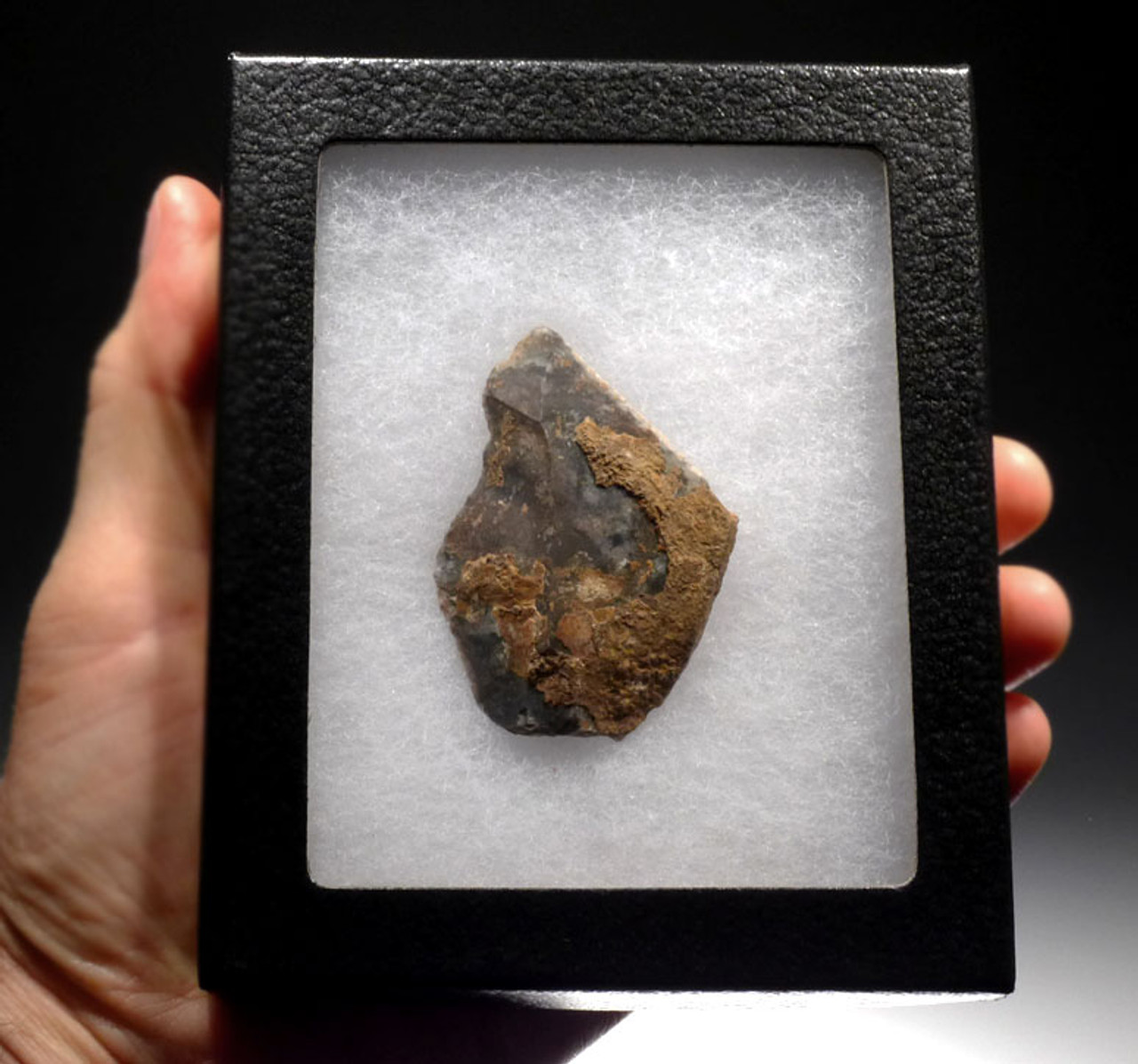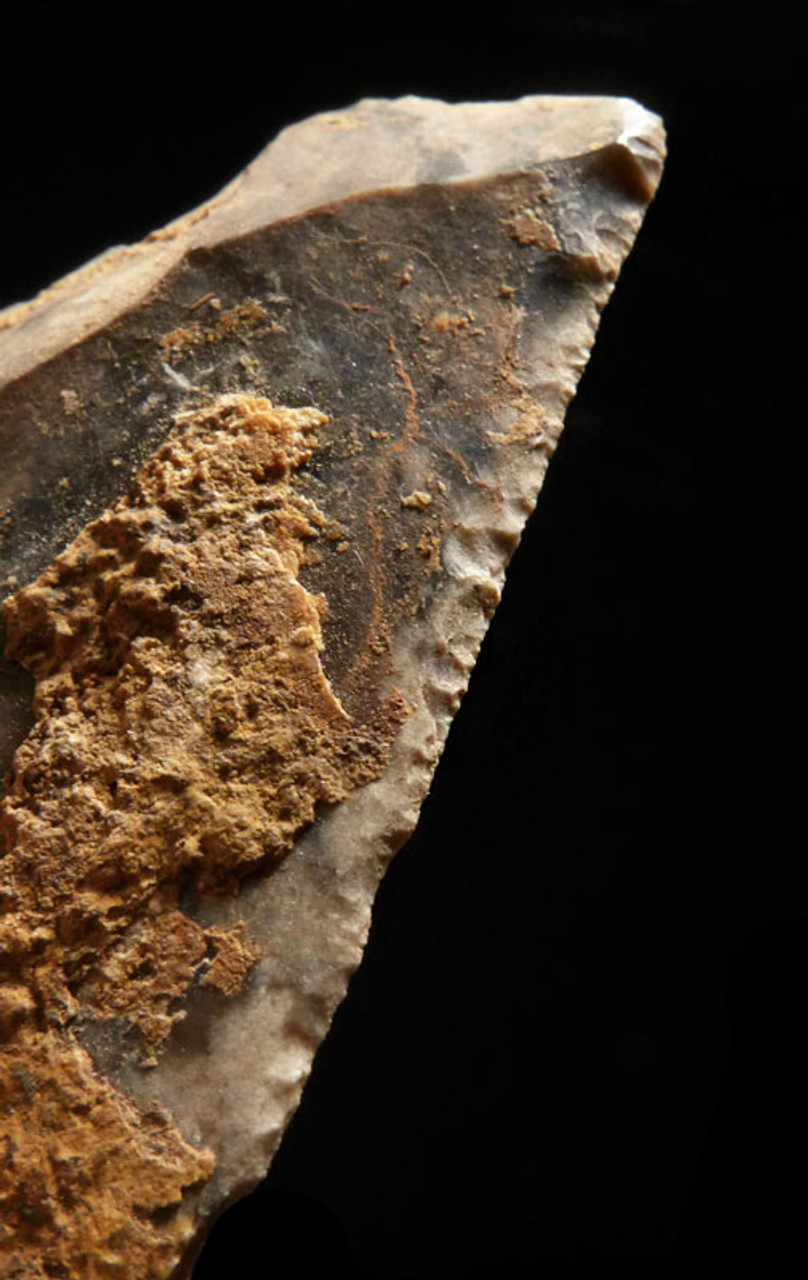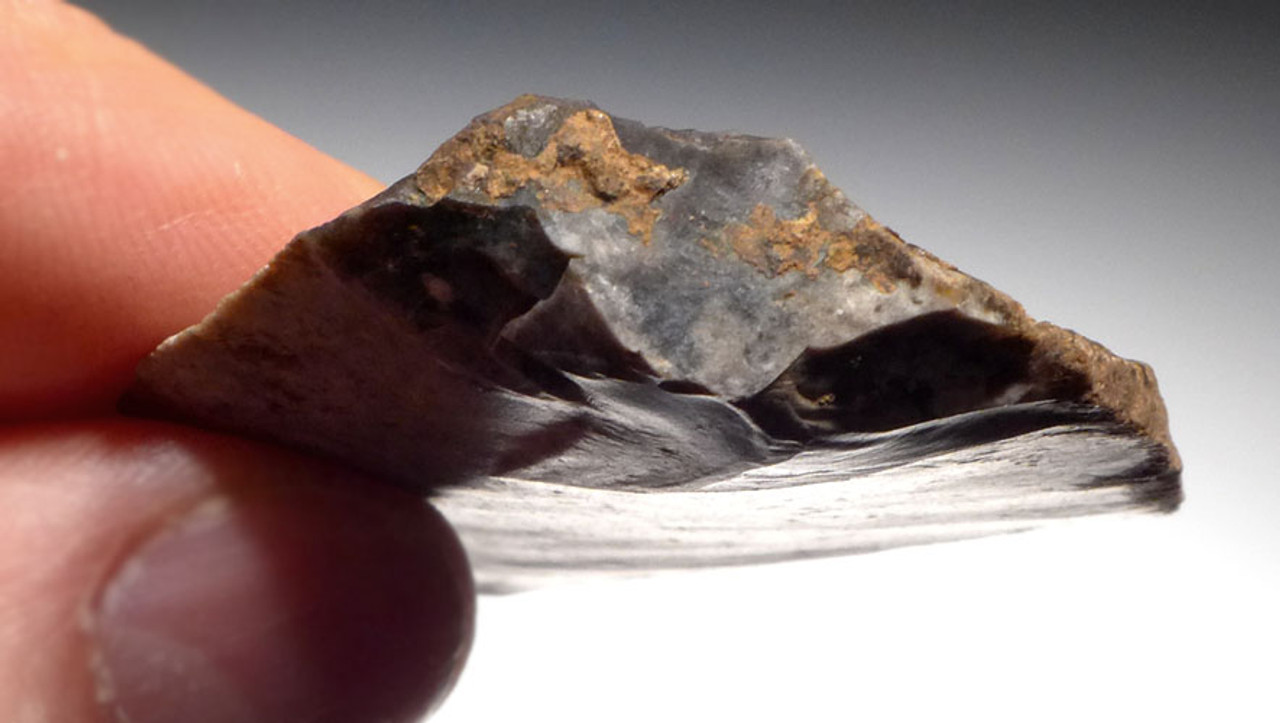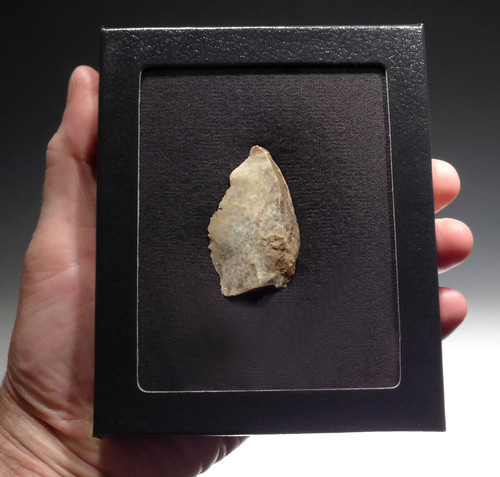Product Description
SEE MORE MOUSTERIAN NEANDERTHAL TOOLS
For comparison prices, please see the "Old World Typology and Price Guide" section of the "OVERSTREET IDENTIFICATION AND PRICE GUIDE TO INDIAN ARROWHEADS" editions 7th, 8th and 9th.
A well-made Mousterian Levallois Point / Spearhead is a rare Neanderthal artifact, much more so than hand axes from the same period. This offering takes that one step further in having a rare feature that this newly invented weapon in human history, is not known for - an undulating side that would have allowed for increased penetration but more damaging cutting when entering flesh deeper.
The concept of a "projectile point" was FIRST KNOWN in human history during the Middle Paleolithic Period, whereas, hand axes had been around for over one milllion years by that same time. This might explain the sheer scarcity of fine grade point specimens. The Mousterian Point of Levallois Point would be Man's first spearhead. Lashed to a wooden pole, it would have gave rise to the invention of a new weapon for hunting large game. Now, the megafauna of the day such as mammoths, bison, rhino, and horse, could be hunted with greater success. Such a weapon would have also gave prehistoric humans, a more effective weapon against each other.
This large example shows a form and ingenious design we never seen before. It was made on a Levallois point and then retouched for a unique "blade belly" on one side. The opposing side is a classic Mousterian point broad edge. The undulating single side would have allowed more effective penetration with its narrow tip and the belly on the edge would have made for more effective slicing as the point continued in its penetration. The secondary flaking on BOTH SIDES is the BEST WE HAVE EVER SEEN IN A NEANDERTHAL MOUSTERIAN POINT! Tool features like this show the remarkable developing ingenuity of the prehistoric mind. The edges on both sides are still razor sharp as originally made, with no damage. The tip in intact as made. The base shows prehistoric retouching to taper the form thereby enabling hafting onto a pole. Surface shows prehistoric patina and mineral deposits still embedded in the hinge fractures - irrefutable evidence of an authentic specimen. A rare, rare invention of Neanderthal intelligence improving a new design. In perfect, AS MADE condition.
This unusual and large Mousterian point / spearhead offered here, was made by Neanderthals over 40,000 years ago and was discovered in France in a rock shelter. France is home to some of Europe's most spectacular Paleolithic sites nearly all of which are now closed and off-limits to any collecting, makes this scarce prehistoric weapon a scarce and highly desirable acquisition piece for the best collections or investment! This Mousterian Point came from a very old French collection as is the case with all the best material being stashed for decades and decades in private collections of yesteryear when collecting was possible. Today, sites are depleted, closed and protected, preventing further digging of any new artifacts.
HISTORY
Mousterian Points are theorized to have been used as spearheads mounted on the ends of wooden poles and employed to stab large prey by Neanderthal hunters. Certainly a specimen like this would have been a formidable weapon and such a size would have been needed to take down large prey such as Woolly Mammoth, Bison, Aurochs, Cave Bear and Woolly Rhinoceros. The form and execution of this extraordinary spearhead is superb. By this period in time, Man had not yet invented the bow and arrow but intact Neanderthal wooden spears have been scientifically documented in situ. Triangular pointed tips first made by Neanderthals were the precursor to the arrowhead!
The Levallois Technique is a method of flake tool manufacture that was first employed in the Acheulian Era about 250,000 years ago by archaic Homo sapiens but perfected in the Middle Paleolithic Era by Neanderthals. It consists of starting with a core of stone and using heavy percussion hammering on one side to remove large flakes in a radial fashion, creating a "turtle-back" profile on one side of the core. A single heavy blow at one end of the core struck the flake off and the end result was a prepared flake (a la Levallois) with a convex shape on one side (from initial flake removal when still attached to the core) and a flat side on the other (from the side split off the remaining core). Edges of this struck flake were then retouched to create the desired cutting edge but the geometry of the two sides remained. It was the Levallois method employed by Neanderthals to manufacture a variety of early tools including the first points that were hafted to wooden poles for use as spears. These were the first known human-made spears and were likely used by thrusting, rather than throwing.
 US DOLLAR
US DOLLAR
 EURO
EURO
 AUSTRALIAN DOLLAR
AUSTRALIAN DOLLAR
 CANADIAN DOLLAR
CANADIAN DOLLAR
 POUND STERLING
POUND STERLING




















